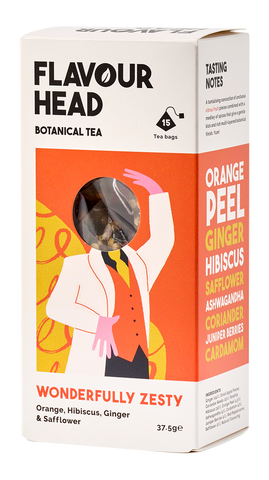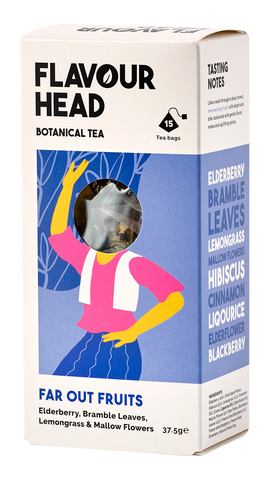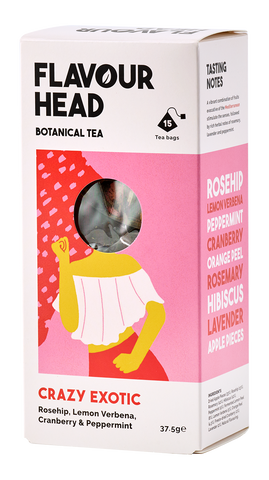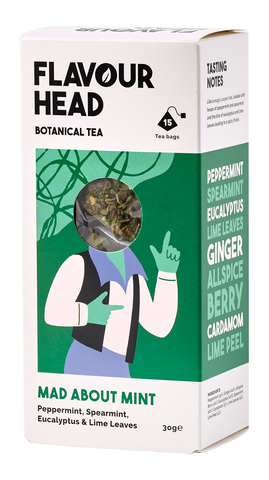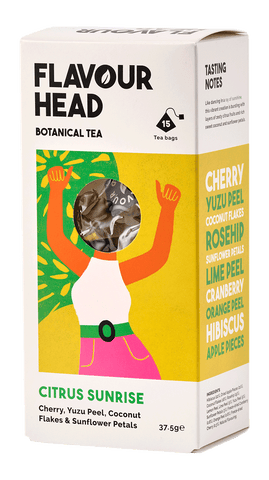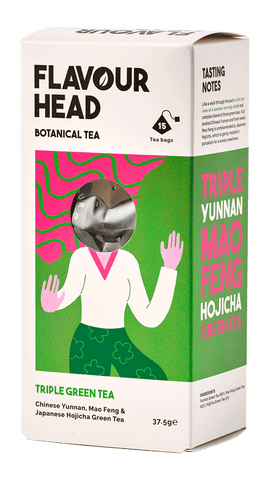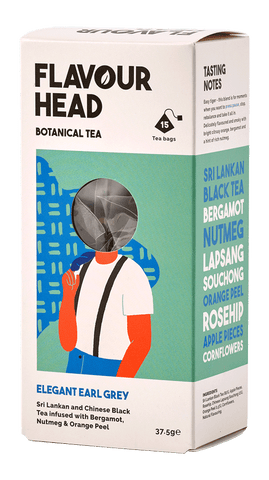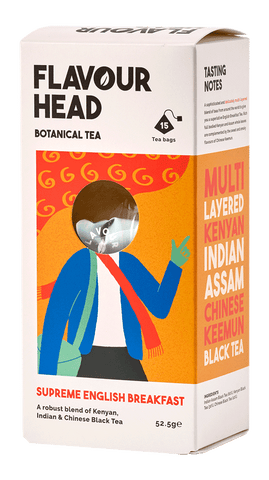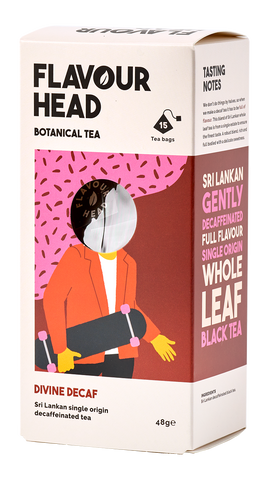OUR TEA INGREDIENTS
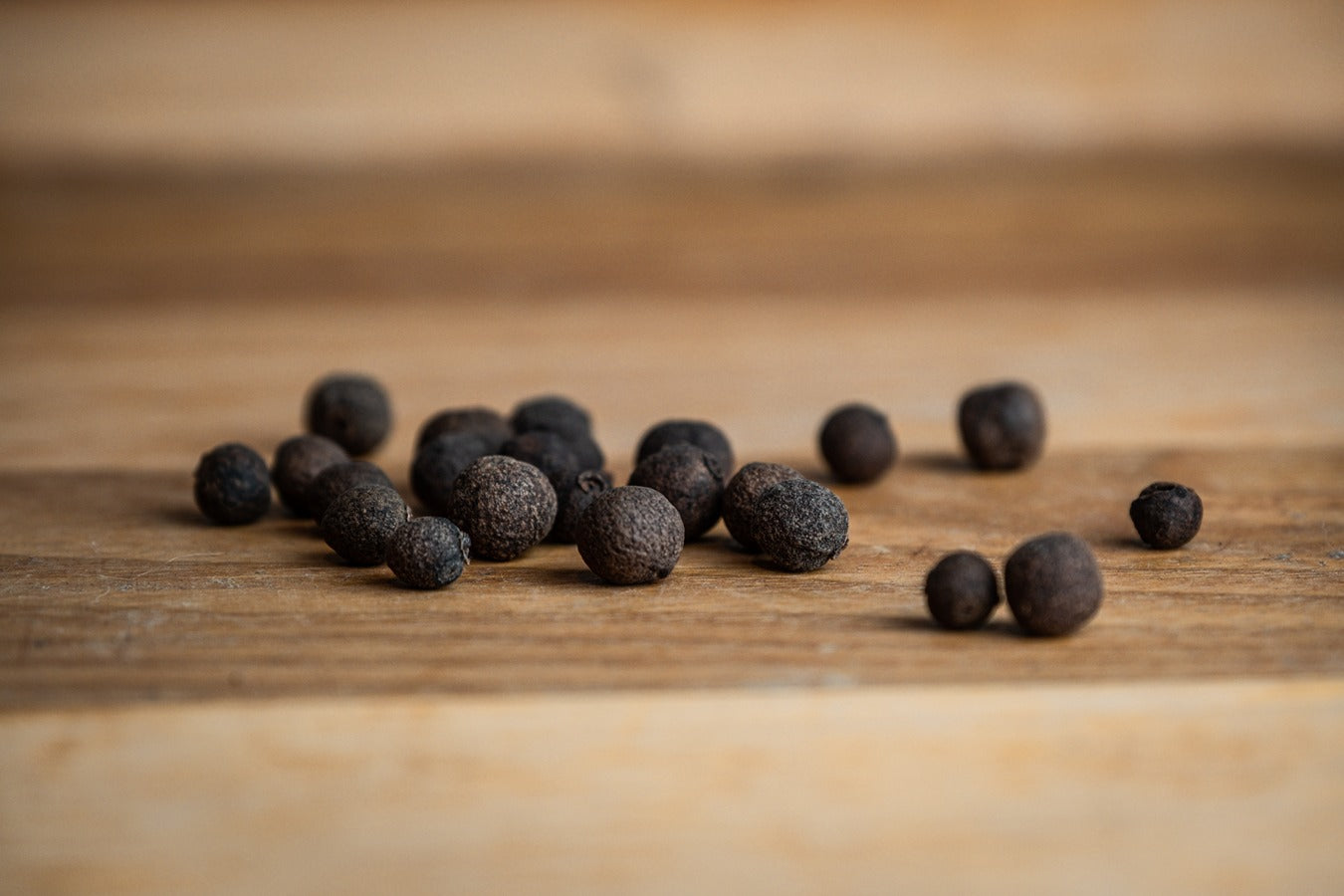
allspice berry
Tastes like a combination of cloves, cinnamon, and nutmeg, slightly bitter, earthy, and fruity and an ideal tea ingredient.
Allspice, also known as Pimenta dioica, is a plant native to the West Indies and Central America. The term "allspice" is also used to refer to the dried, unripe fruit or berries of this plant.
The name allspice was coined as early as the 17th century by the English, who thought it combined the flavour of cinnamon, nutmeg, and cloves. The allspice berries are usually sun-dried until they turn a reddish-brown colour. Once dried, they can be used whole or ground up as a spice.
Allspice has a rich and warm flavour and aroma, making it a popular spice in various cuisines. In addition to its culinary uses, allspice has been used in traditional medicine and in the commercial manufacture of certain cosmetics and fragrances.
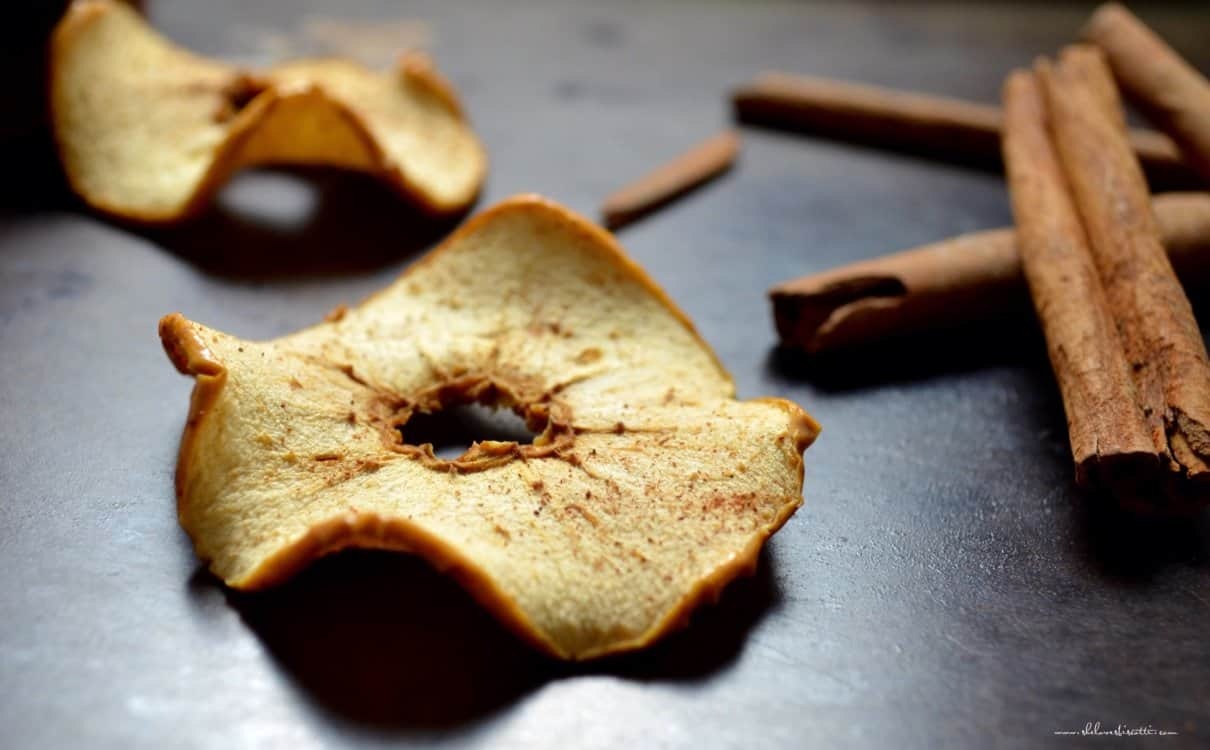
Dried Apple pieces
A gentle fruit flavour is used to hold the natural fruit essence flavourings.
Dried apple pieces are simply apple fruits that have been dried, removing the majority of the water content from the apples, which helps to concentrate the flavours and natural sugars, making them taste sweeter.
The process involves slicing the apples into pieces, removing the core and seeds, and sometimes peeling. The apple pieces are then dried at a low temperature, or sometimes even air-dried.
Dried apple pieces can be enjoyed as a snack, added to trail mixes, granola, and cereal, or used in baking recipes such as muffins, cookies, or pies.
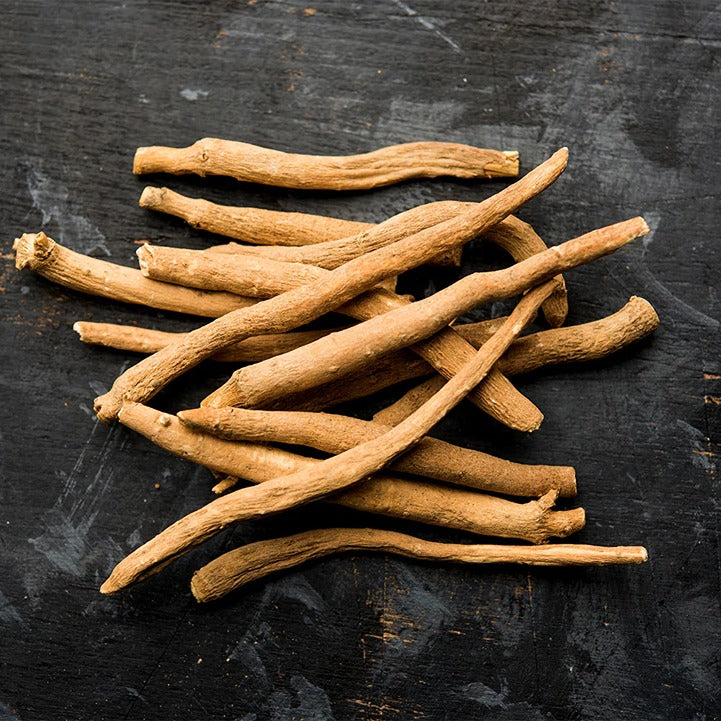
ashwagandha
An Indian root that tastes bitter, pungent and sweet.
Ashwagandha (Withania somnifera), also known as Indian ginseng or winter cherry, is a plant native to India and North Africa. It's particularly well-known for its use in Ayurveda, a form of traditional Indian medicine that has been used for thousands of years.
The roots and berries of the ashwagandha plant are used to produce extracts, powders, and capsules that are often used as dietary supplements. These supplements are touted for their adaptogenic properties, meaning they are believed to help the body adapt to stress and exert a normalising effect upon bodily processes.
Various studies suggest that ashwagandha may have several potential health benefits, including stress and anxiety, depression, fertility and testosterone, inflammation and Immunity, and cognitive function.
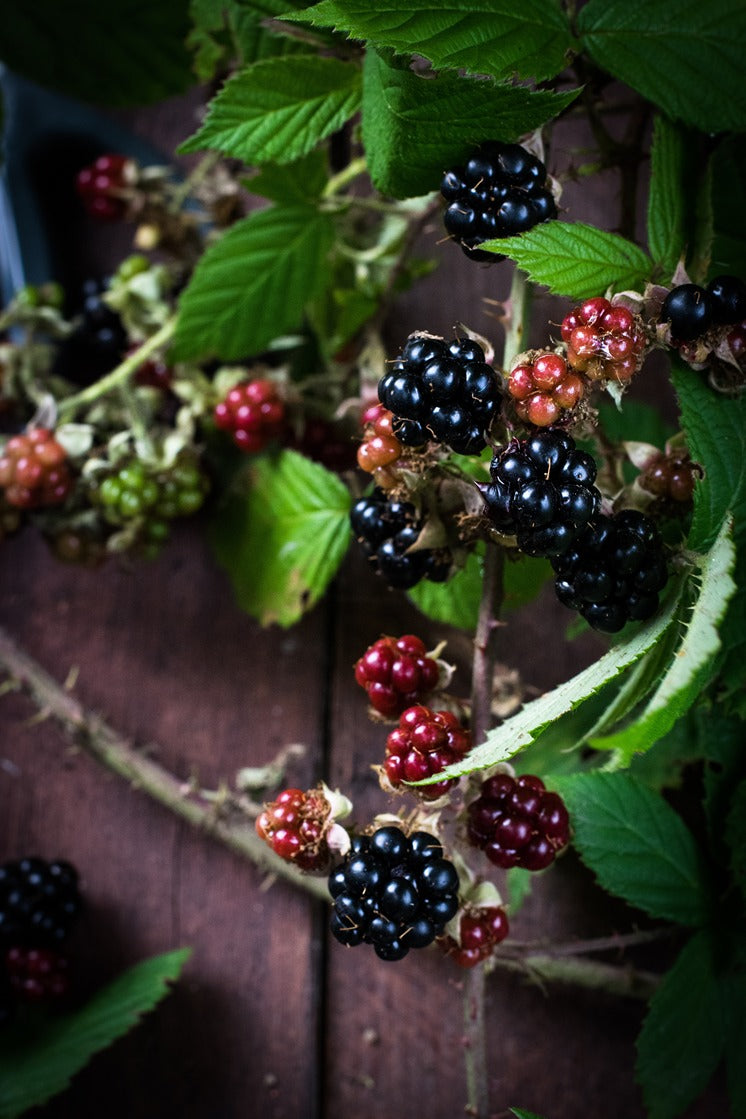
Blackberry
Chunks of dark fruit that is succulent, sweet, juicy and tart
A blackberry is a fruit produced by several species in the Rubus genus in the Rosaceae family. The term "blackberry" also refers to the plants themselves, which are perennial, mostly thorny shrubs known as brambles.
Blackberries are aggregate fruits, meaning each is composed of many tiny fruits called drupelets. Each drupelet contains a seed, and all drupelets cluster around a central core. When fully ripe, blackberries have a deep, dark colour and a sweet-tart flavour.
Blackberries are rich in vitamins (especially vitamin C), minerals, and antioxidants. They are commonly eaten fresh but are also used in cooking and baking, particularly in desserts like pies, cobblers, and jams. Blackberry wine and liqueurs are also famous.
Blackberries grow in the wild in many parts of the world, including North America, Europe, and Asia.
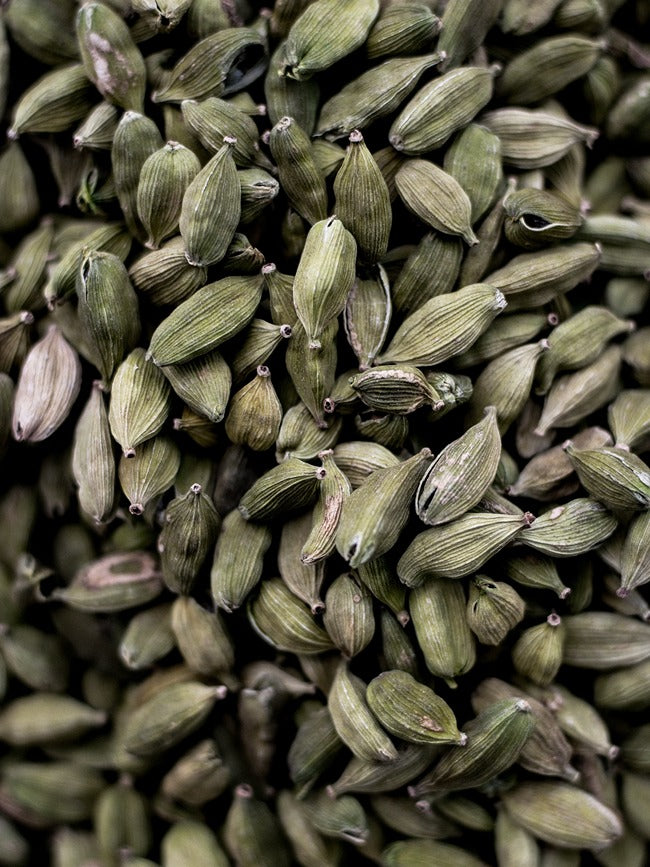
cardamom
A complex spice in taste and aroma; pine and fruity menthol.
Cardamom is a spice that comes from the seeds of various plants in the genera Elettaria and Amomum, which are members of the ginger family. It is native to the Indian subcontinent and is now grown in several countries, including India, Guatemala, Sri Lanka, and Tanzania.
Cardamom is known for its intense, aromatic flavour and is widely used in both sweet and savoury dishes as well as in cardamom tea. It has a warm, slightly citrusy, and slightly minty taste with hints of eucalyptus. The spice is available in two main varieties: green cardamom and black cardamom.
Green cardamom, which is the more common and popular type, has a bright green colour and a strong, sweet flavour. It is often used in desserts, beverages like chai tea, and Indian cuisine. The pods containing the seeds are typically crushed or ground before use.
On the other hand, Black cardamom has a smoky and more intense flavour. It is used in savoury dishes, such as curries and stews, particularly in Indian and Southeast Asian cuisines. The pods of black cardamom are larger and darker in colour compared to green cardamom.
Cardamom is not only valued for its flavour but also for its potential health benefits. It contains essential oils and compounds believed to have antioxidant, anti-inflammatory, and digestive properties.
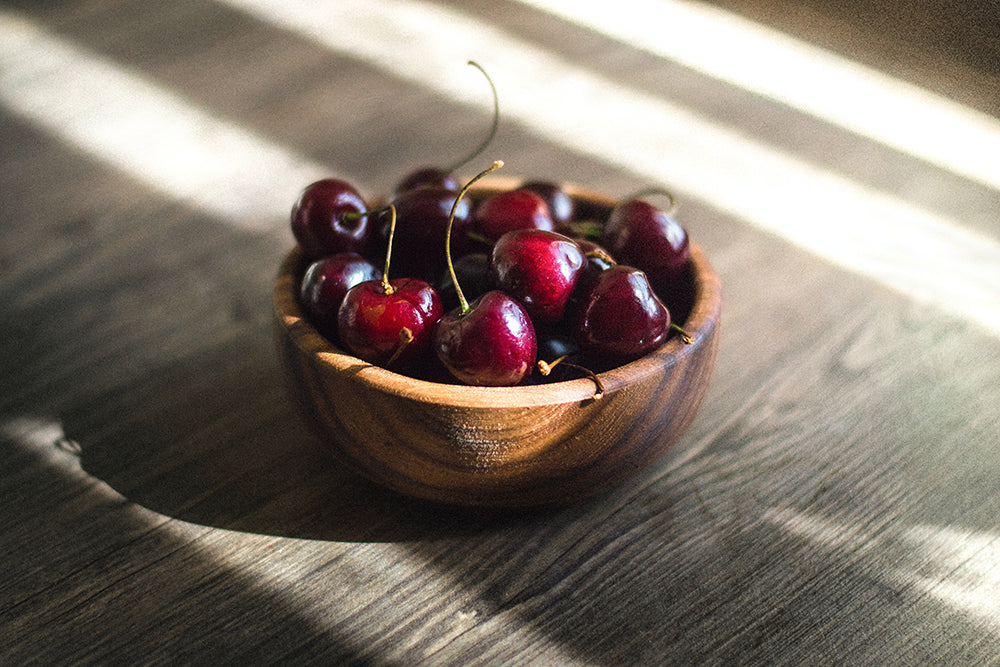
cherry
Freeze-dried chunks that taste sweet, sour, and slightly nutty.
Cherry refers to both a type of fruit and the tree that bears it. Cherries are small, round fruits with smooth skin and a single hard seed (stone) in the centre. They typically have a sweet and tart flavour, although the taste can vary depending on the variety. Cherries are known for their vibrant red colour but can also be yellow or black.
Cherry trees belong to the genus Prunus and are part of the Rosaceae family. They are native to some areas of Europe, Asia, and North America. Cultivated cherry trees are grown in many countries worldwide due to their commercial and culinary value.
There are several popular varieties of cherries, including Bing, Rainier, Morello, and Lambert, each with its own distinct characteristics. Some cherries are best suited for eating fresh, while others are more commonly used for cooking or baking.
In addition to being delicious, cherries offer several health benefits. They are a good source of vitamins, minerals, and dietary fibre. Cherries are mainly known for their high content of antioxidants, such as anthocyanins, which have been linked to various health benefits, including reducing inflammation and protecting against chronic diseases.
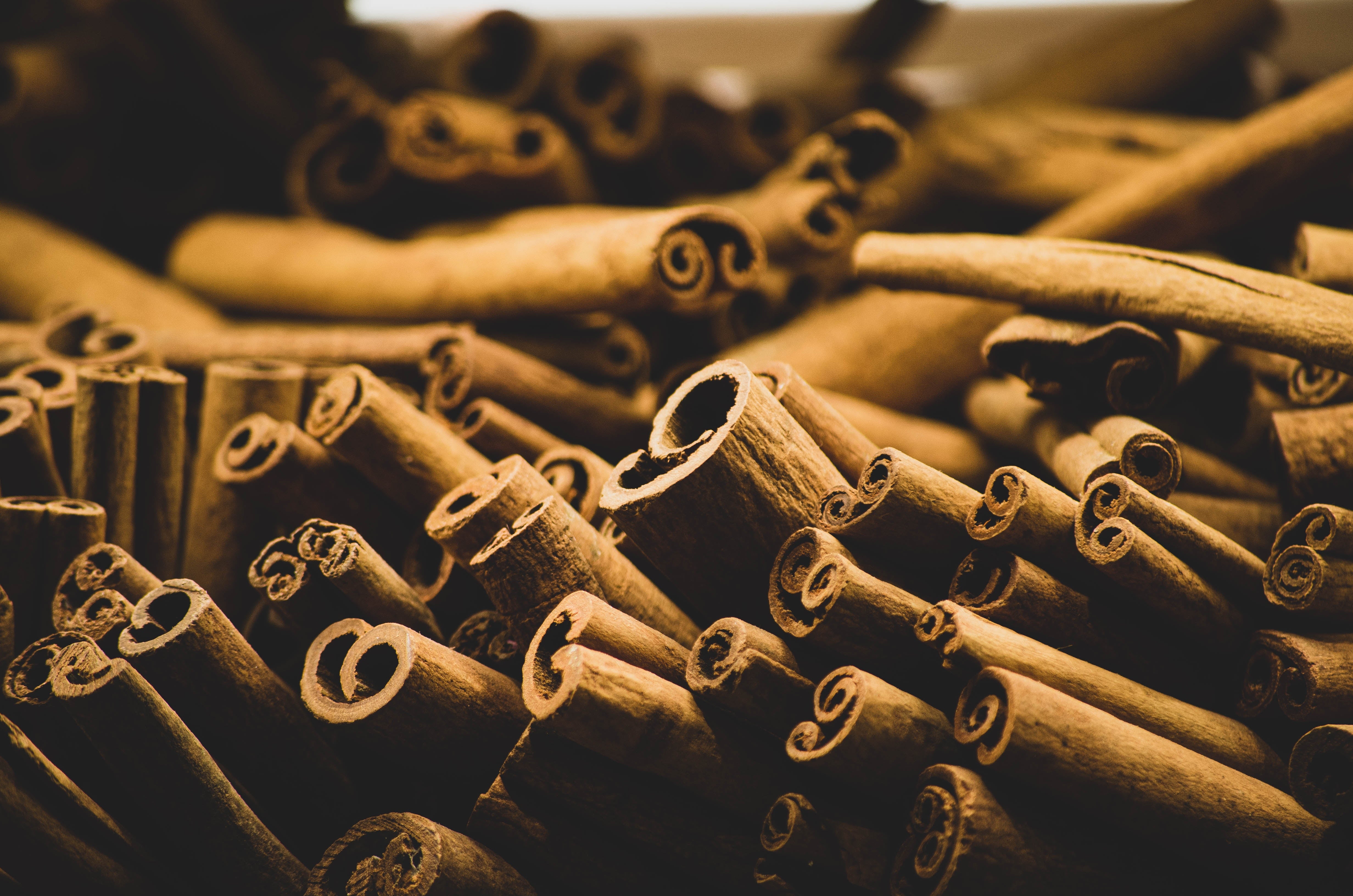
cinnamon
Sweet woody flavour and lightly citrusy.
Cinnamon is a spice derived from the bark of trees belonging to the Cinnamomum genus. It is obtained by drying the inner bark and then rolling it into quills or grinding it into a powder. Cinnamon has been used for centuries as a flavouring agent and medicinal herb.
There are several varieties of cinnamon, but the most common types are Ceylon cinnamon (Cinnamomum verum) and cassia cinnamon (Cinnamomum cassia). Ceylon cinnamon, often referred to as "true" cinnamon, is native to Sri Lanka and has a mild and slightly sweet flavour. On the other hand, Cassia cinnamon is more widely available and has a stronger, spicier taste.
Cinnamon is known for its warm, sweet aroma and distinctive flavour, which is often described as woody, earthy, and slightly peppery. It is commonly used in both sweet and savoury dishes, as well as beverages.
Cinnamon contains various compounds, including cinnamaldehyde, responsible for its distinct flavour and fragrance. Cinnamon has been studied for its antioxidant, anti-inflammatory, and antimicrobial properties. It has also been associated with potential blood sugar control, heart health, and cognitive function benefits.
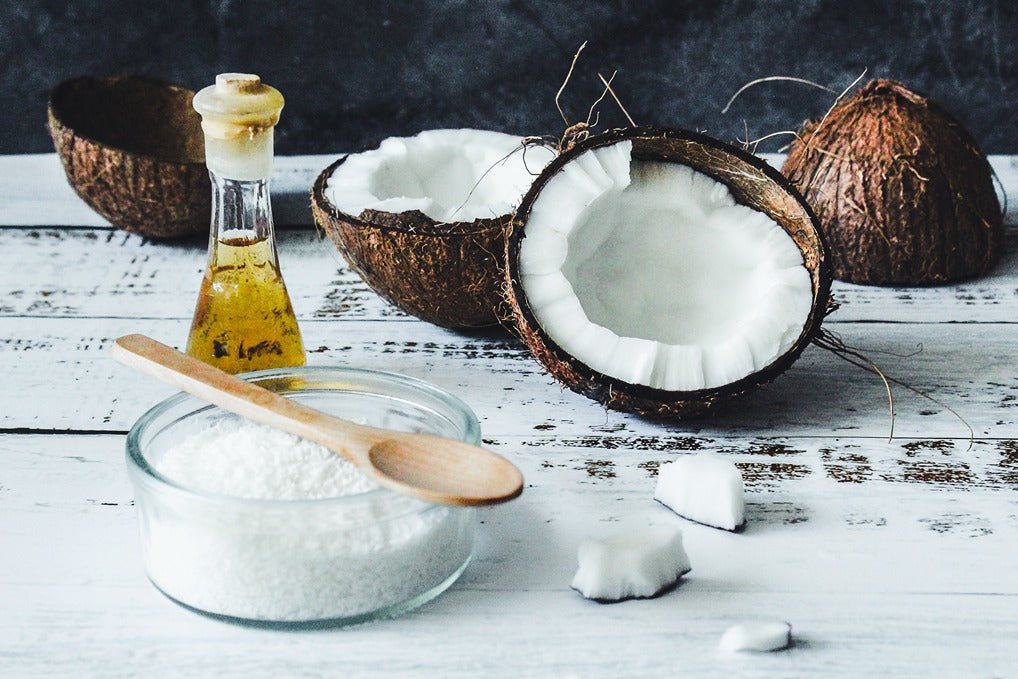
Coconut flakes
Milky nutty flavour.
Coconut flakes, or desiccated coconut or coconut shreds, are made from mature coconut's dried, grated meat. They are commonly used in baking, cooking, and as a topping or ingredient in various dishes.
To make coconut flakes, the white flesh of the coconut is grated or shredded, then dried to remove moisture. This results in flakes or shreds with a light, fluffy texture and a distinct coconut flavour.
Coconut flakes offer some nutritional benefits. They are a good source of dietary fibre, healthy fats, and minerals such as manganese and copper.
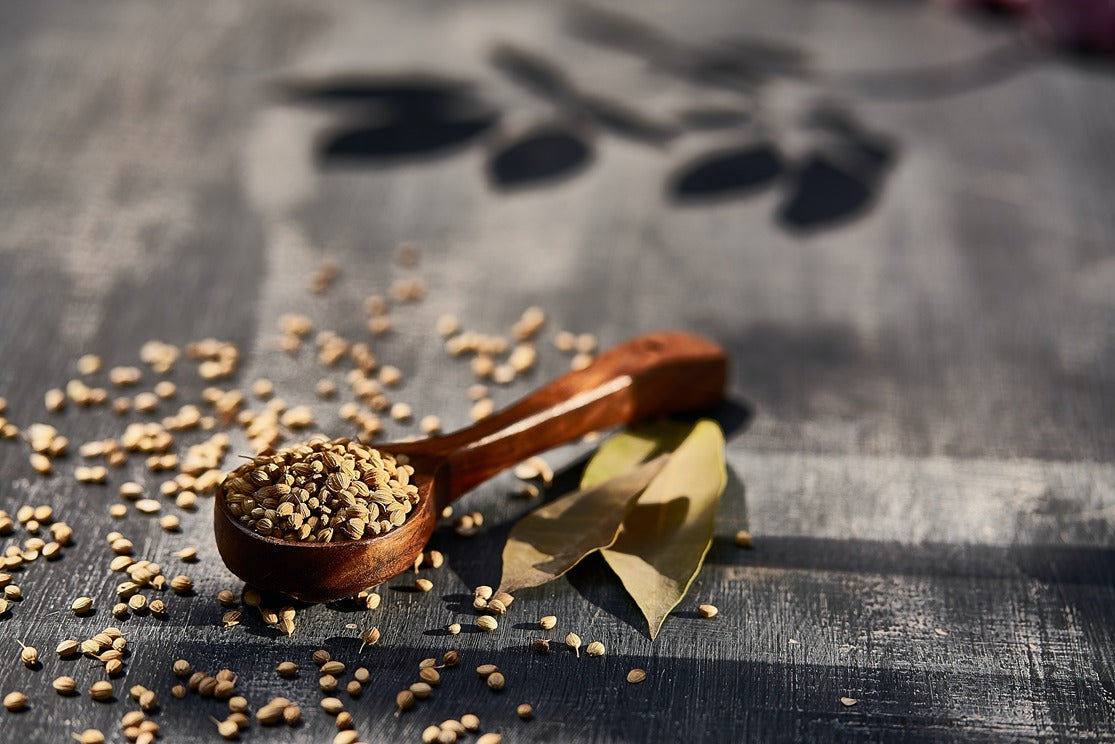
coriander
Nutty mellow citrus flavour.
Coriander, also known as cilantro or Chinese parsley, is an herb widely used in various cuisines worldwide. It is a member of the Apiaceae family, which includes other aromatic plants like parsley, dill, and celery.
Coriander is known for its bright green leaves with a distinct, refreshing flavour. The leaves are often used as a herb or garnish in cooking, particularly in Asian, Middle Eastern, and Latin American cuisines. The flavour of coriander leaves can be described as citrusy, slightly floral, and with hints of parsley.
Coriander has been used for its potential health benefits. It is a good source of vitamins, minerals, and antioxidants. It is believed to have digestive and anti-inflammatory properties and may help lower cholesterol levels and blood pressure.
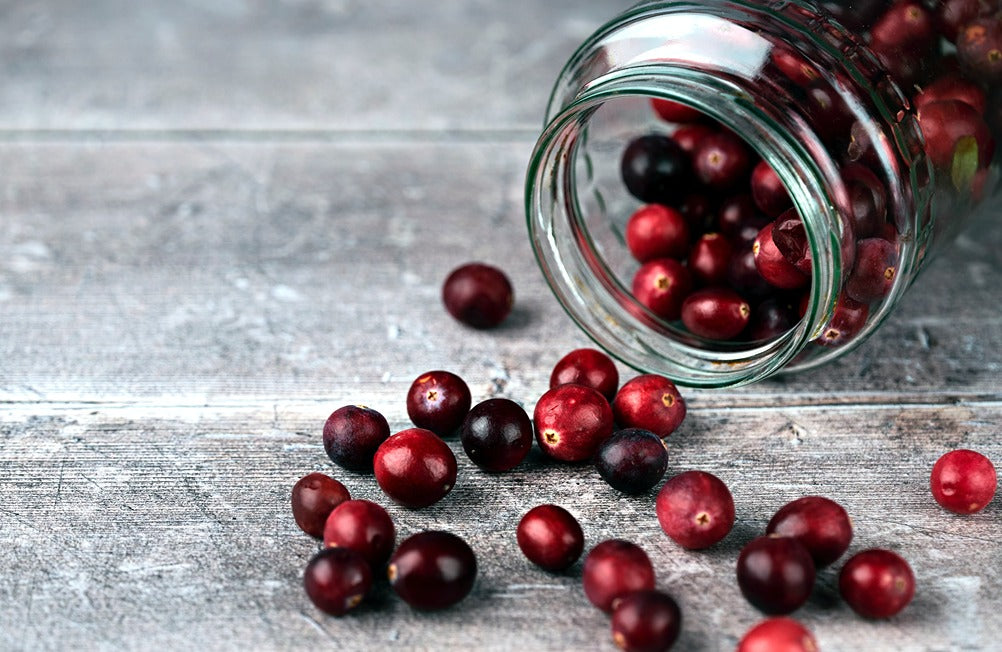
cranberry
Bright tart red fruit.
Cranberry is a small, tart, red berry that grows on evergreen shrubs belonging to the Vaccinium genus.
The two most common species of cranberries are the American cranberry (Vaccinium macrocarpon) and the European cranberry (Vaccinium oxycoccos). They are native to North America and certain regions of Europe and Asia.
Cranberries are rich in antioxidants and contain various vitamins and minerals, including vitamin C, vitamin E, and manganese.
Cranberries are also known for their high content of proanthocyanidins (PACs), which are compounds that may have antibacterial properties and can help promote urinary tract health.
Cranberries are available fresh during their harvest season, typically from September to December, and they can also be found frozen, dried, or processed into various products throughout the year.
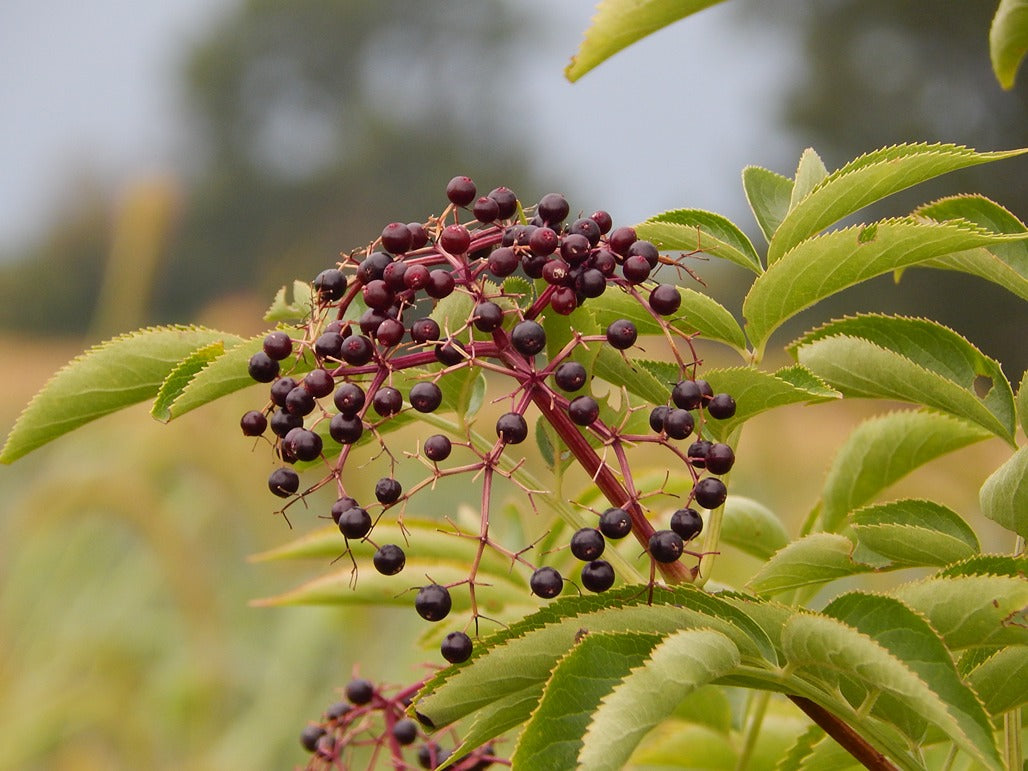
elderberry
Bitter woodsy floral dark fruit.
Elderberry refers to the fruit of the elder tree, scientifically known as Sambucus. The most commonly used species for their edible berries are the European elder (Sambucus nigra) and the American elder (Sambucus canadensis).
Elderberries are small, dark purple or black berries that grow in clusters on the elder tree. They have a sweet and tart flavour, somewhat similar to blackberries or blueberries. Elderberries can be consumed raw and cooked, often used in culinary preparations and traditional remedies.
Traditional medicine has used them for centuries to support the immune system and alleviate symptoms of colds, flu, and other respiratory infections. They are rich in antioxidants, particularly anthocyanins, which contribute to their deep purple color and are believed to have anti-inflammatory and antiviral properties.
Supplements and preparations are widely available, but it's advisable to consult a healthcare professional before using them, especially if you have any underlying health conditions or are taking other medications.
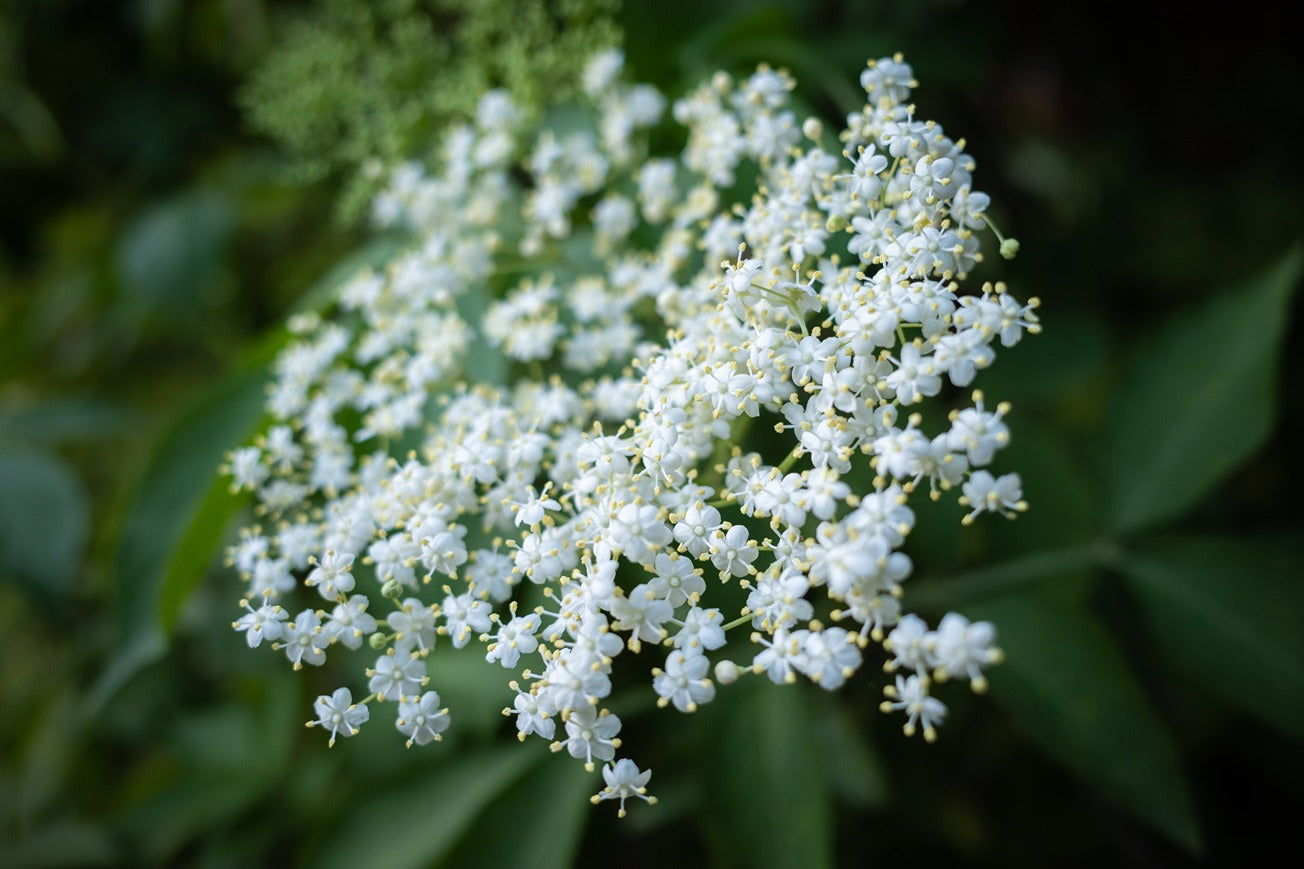
elderflower
Attractive white flowers that taste of fresh fruity green and slightly floral pear and tropical lychee.
Elderflower refers to the delicate white flowers that bloom on the elder tree, scientifically known as Sambucus. The most commonly used species for their edible flowers are the European elder (Sambucus nigra) and the American elder (Sambucus canadensis).
Elderflowers have a fragrant and floral aroma and are highly valued for their culinary and medicinal uses. They are typically harvested in late spring or early summer when the flowers fully bloom.
They are believed to have various health benefits, including antioxidant and anti-inflammatory properties. Elderflower preparations, such as teas and tinctures, have been used to soothe cold and flu symptoms, relieve congestion, and support the immune system.

eucalyptus
Bracing mint citrus peppery taste.
Eucalyptus is a diverse genus of flowering trees and shrubs in the myrtle family (Myrtaceae). It includes over 700 different species, most of which are native to Australia.
Eucalyptus trees are known for their distinct aroma, attractive bark patterns, and unique foliage.
The leaves of eucalyptus trees contain essential oils, giving them a strong, refreshing fragrance. Eucalyptus oil is derived from the leaves through steam distillation and is widely used for its medicinal and aromatic properties. When inhaled, the aroma of eucalyptus oil can help clear nasal passages and promote a sense of relaxation.
Eucalyptus trees also have environmental benefits. They are known for their rapid growth and ability to adapt to various climates. In some regions, eucalyptus plantations are established for timber production, erosion control, and land rehabilitation.
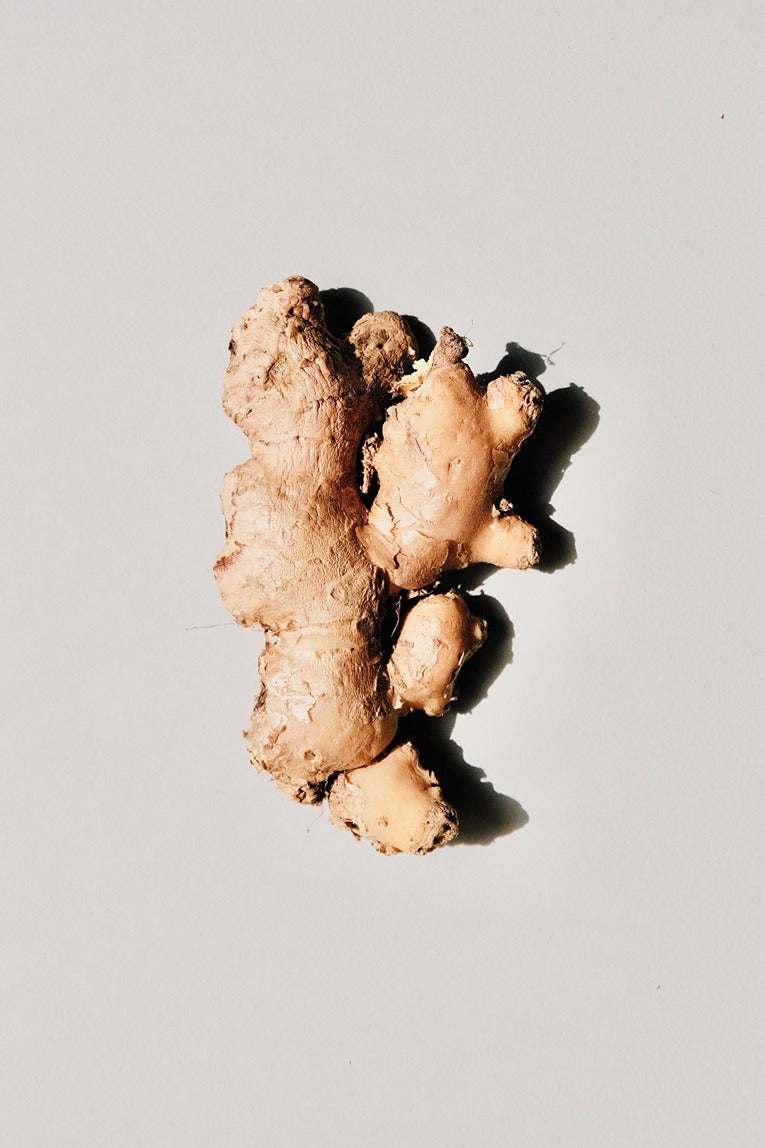
ginger
Warming spiciness and gentle kick.
Ginger is a flowering plant belonging to the Zingiberaceae family. It is native to Southeast Asia but is now cultivated in many parts of the world for its culinary and medicinal uses. The part of the ginger plant commonly used is the rhizome, the thick, knobby underground stem.
Ginger has a spicy and pungent flavour with a slightly sweet undertone. It is widely used in various cuisines for its aromatic and distinctive taste. It can be used fresh, dried, powdered, or as a juice or oil.
It is known to aid digestion, reduce nausea and vomiting, and relieve inflammation. Gingerol, the main bioactive compound in ginger, is believed to be responsible for many medicinal properties.
Fresh ginger can be sliced, grated, or juiced and added to dishes, teas, or smoothies. Dried ginger powder is commonly used as a spice, while ginger supplements and extracts are also available.

hibiscus
Rolled red leaves that have a slightly sour cranberry and pomegranate taste.
Hibiscus refers to a genus of flowering plants in the Malvaceae family, which includes hundreds of species. The most commonly recognised and cultivated species is Hibiscus sabdariffa, also known as Roselle or Hibiscus roselle.
Hibiscus plants are known for their large, colourful, and showy flowers. Depending on the species, the flowers can vary in colour, including shades of red, pink, orange, yellow, and white. Hibiscus flowers have a distinct trumpet-like shape, with five or more petals and a prominent stamen in the centre.
Hibiscus tea, also known as "sour tea" or "roselle tea," is made by steeping the dried calyxes in hot water. It has a tart and tangy flavour with a deep red colour. Hibiscus tea is consumed in many parts of the world and is known for its refreshing taste, especially when served cold.
It is believed to be rich in antioxidants, such as anthocyanins, and may help support cardiovascular health, regulate blood pressure, and have anti-inflammatory properties.

Juniper berries
Slightly piny with a touch of fruity pepperiness.
trees, primarily from the Juniperus genus. Juniper plants are evergreen and belong to the cypress family, Cupressaceae.
Juniper berries are initially green and gradually turn dark blue or purple as they ripen. They have a unique flavour often described as sharp, piney, and slightly citrusy. The taste profile of juniper berries is most commonly associated with gin, as they are one of the essential botanicals used in its production.
Although juniper berries are often called berries, they are technically modified cones rather than actual berries. They have fleshy scales containing seeds, which are used in culinary and medicinal applications.
They are believed to possess diuretic, digestive, and antimicrobial properties. Juniper essential oil is used in aromatherapy, and juniper-based herbal preparations are sometimes used to support digestive health and as a diuretic.
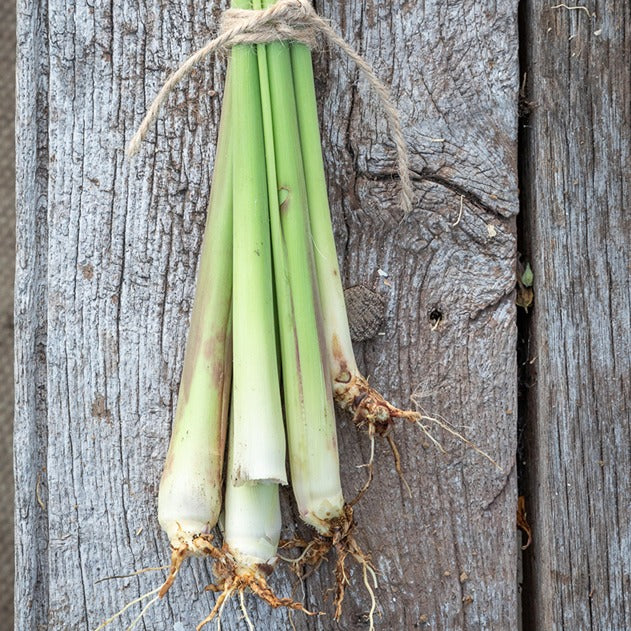
lemongrass
Mild citrus with a hint of ginger.
Lemongrass, also known as Cymbopogon, is a herbaceous plant native to tropical regions of Asia, particularly India, Sri Lanka, and Thailand. It is widely cultivated and appreciated for its strong lemon-like flavour and aroma.
Lemongrass has long, slender, and fibrous stalks with a pale green colour and a bulbous base. The lower part of the stalks, which is thicker and more tender, is commonly used in cooking, while the upper portion is often discarded or used to infuse flavour in soups or teas.
It contains essential oils, including citral, for its scent and flavour. Lemongrass is believed to have anti-inflammatory, antimicrobial, and antioxidant properties. It is also used to promote digestion, relieve anxiety, and ease cold and flu symptoms.
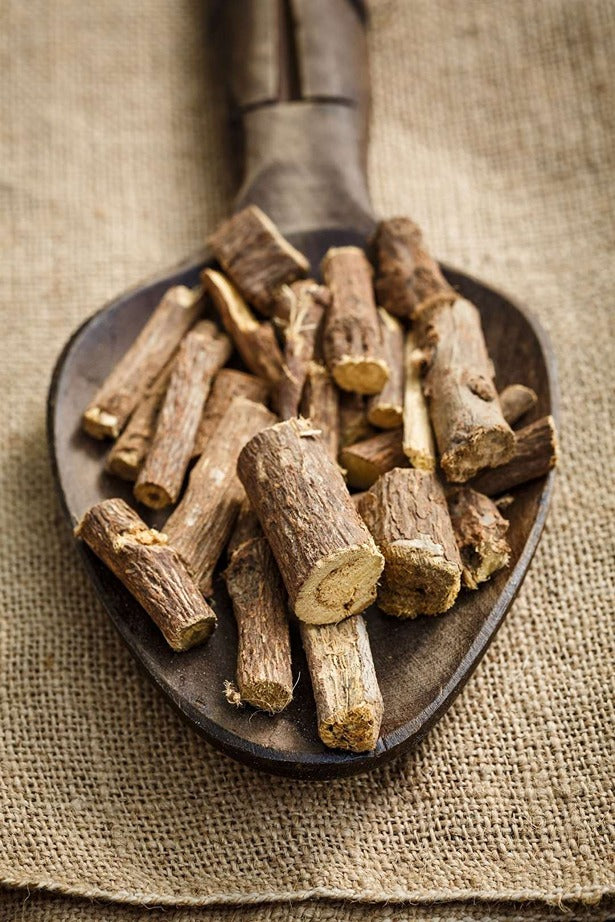
liquorice
A slightly salty mix of sweet spice.
Liquorice refers to the root of the Glycyrrhiza glabra plant, a legume family member, Fabaceae. Liquorice has a distinct sweet, aromatic, and slightly woody flavour.
The root of the liquorice plant has been used for centuries in traditional medicine and as a flavouring agent in various culinary preparations. It contains a compound called glycyrrhizin, responsible for its characteristic taste.
Liquorice has been used in traditional medicine for its potential health benefits. It is believed to have anti-inflammatory, antiviral, and antioxidant properties. Liquorice root extracts and teas have been used to soothe coughs, support respiratory health, and aid digestion.
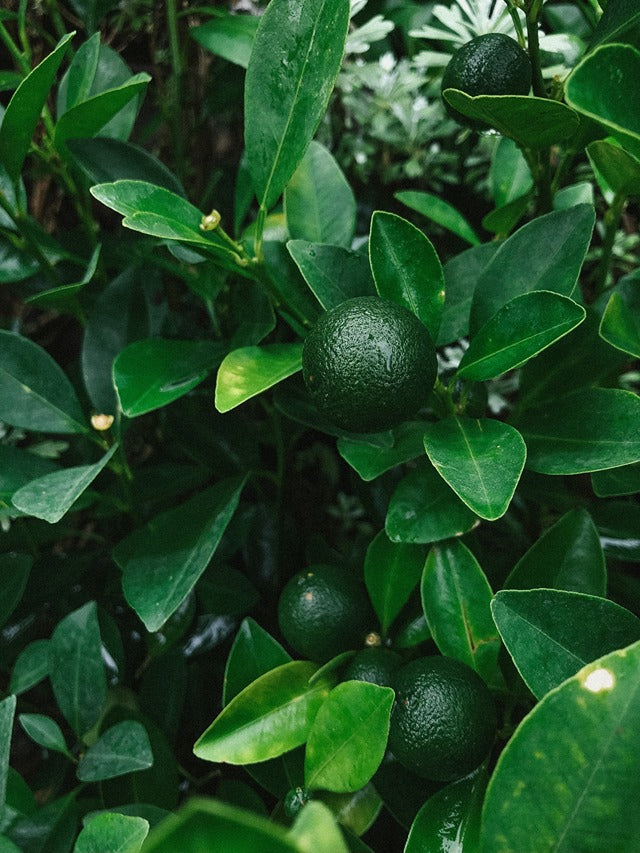
Lime leaves
Rolled lime leaves, sharp and citrusy.
Lime leaves, also known as Kaffir lime leaves or Makrut lime leaves, are the aromatic leaves of the Kaffir lime tree (Citrus hystrix). These leaves are commonly used in Southeast Asian cuisines, particularly Thai, Indonesian, and Malaysian dishes.
Lime leaves have a distinct and vibrant fragrance that is often described as citrusy, floral, and slightly sweet. They are characterised by their glossy, dark green colour and unique shape, which consists of two lobes attached to a stem.
Lime leaves are highly valued for their intense flavour and aroma, which can infuse dishes with a citrusy and refreshing note. The leaves are typically used whole or torn into pieces but are not usually consumed as they can be pretty tough and fibrous.
The most common culinary use of lime leaves is in Thai cuisine, where they are a key ingredient in dishes like Tom Yum soup, green curry, and fish cakes. Lime leaves can also be used to flavour beverages, such as teas or cocktails, and they can be infused into oils or vinegar for additional culinary applications.
It's important to note that lime leaves differ from the traditional lime fruit used for its juice and zest. Lime leaves have a more complex and aromatic flavour profile than the fruit.
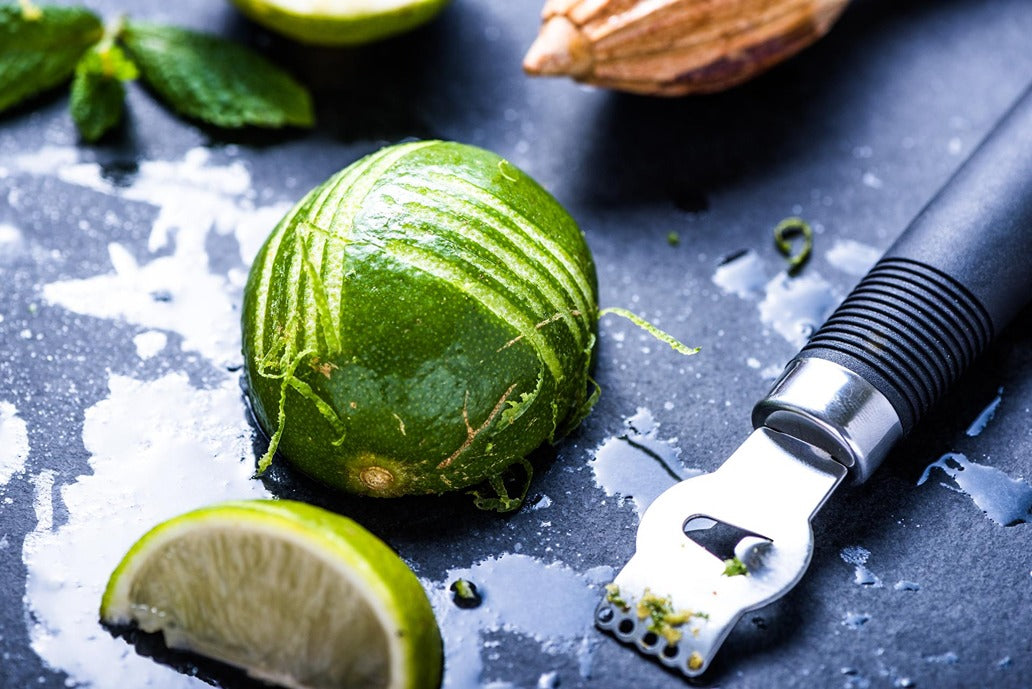
Lime peel
Chunks of lime peel that have a deep citrusy flavour.
Lime peel refers to the outer, coloured layer of the lime fruit, specifically the zest. The thin, outermost layer of the peel contains the essential oils responsible for the lime's distinct aroma and flavour.
Lime peel is highly fragrant and has a tangy, citrusy taste. It is often used as a flavouring ingredient in various culinary applications to add a bright and zesty note to dishes.
It can be preserved by drying or freezing for future use. Dried lime peel, often referred to as lime zest or lime powder.
Lime peel is also commonly used to garnish drinks, both alcoholic and non-alcoholic, such as cocktails, mocktails, and infused water. It adds visual appeal and a burst of aroma to the beverages.

Mallow flowers
Bright purple petals that have a sweet and mild pea flavour.
Mallow flowers refer to the blossoms of plants belonging to the Malva genus, which is part of the Malvaceae family. Mallow flowers are characterised by their delicate petals and vibrant colours, often ranging from pink, purple, and white shades.
Several species of mallow plants produce edible flowers, and they have been used in culinary and herbal traditions throughout history. The two most commonly known types of mallow flowers used for culinary purposes are Marshmallow (Althaea officinalis) and Common Mallow (Malva sylvestris).
The flowers are typically light pink or white and have a sweet and floral scent. They were traditionally used to make marshmallows. The roots of the marshmallow plant have been historically used to have soothing and anti-inflammatory effects and are often used in herbal remedies for throat and respiratory issues.
Common mallow flowers are similar in appearance to hibiscus flowers, with five overlapping petals. They have a mild, slightly tangy flavour and are often used in salads, desserts, and herbal teas. The leaves of the common mallow plant are also edible and can be used as a leafy vegetable.
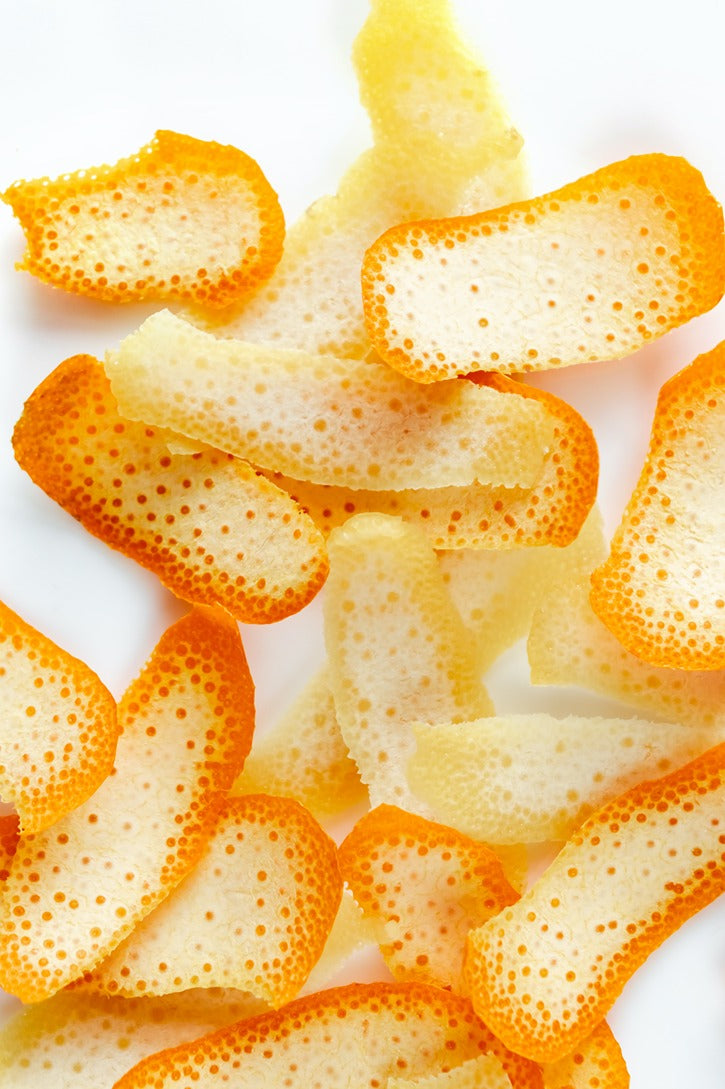
Orange peel
Chunks of bright orange peel with a rich citrus taste
Orange peel refers to the outer, coloured layer of the orange fruit. It is the zest of the orange, which contains the essential oils responsible for its distinctive aroma and flavour.
Orange peel is characterised by its bright orange colour and intense citrus fragrance. It has a slightly bitter and tangy taste, which adds depth and aroma to various culinary preparations.
Orange peel can be used fresh or dried. In addition to culinary uses, orange peel is often used to infuse flavour in beverages like teas, punches, and cocktails. It can also be candied and used as a garnish or ingredient in various confections and desserts.

peppermint
Fresh and cooling green minty taste.
Peppermint is a herbaceous plant in the Mentha genus, known for its refreshing and minty flavour. It is a hybrid between water mint (Mentha aquatica) and spearmint (Mentha spicata). Peppermint is widely cultivated and used in culinary, medicinal, and aromatic applications.
Peppermint leaves are dark green and contain essential oils, primarily menthol, which gives peppermint its characteristic cooling and minty taste. The leaves are often fresh or dried, and peppermint oil is extracted for various uses.
Peppermint has digestive properties and is often used as a remedy for soothing indigestion, bloating, and other digestive discomforts. Peppermint oil is sometimes applied topically for its cooling and calming effects.
Additionally, the aroma of peppermint is known to have an invigorating and uplifting effect, which is why it is commonly used in aromatherapy.
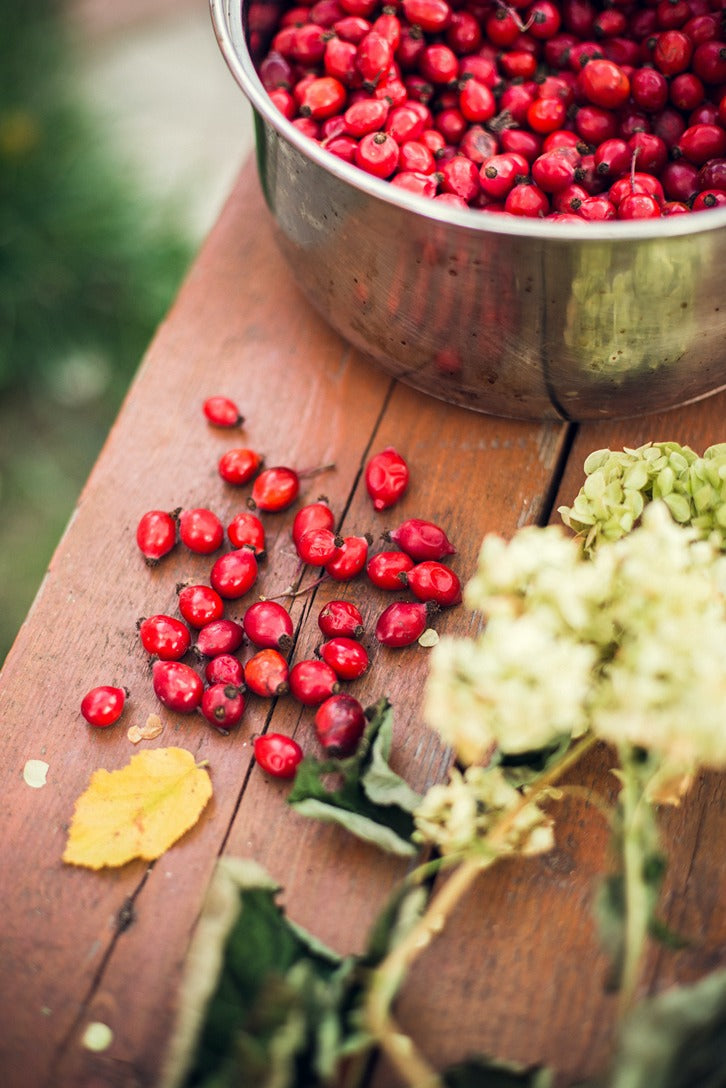
rosehip
Dark red berry that is slightly sweet with a distinct tart aftertaste.
Rosehips are the fruit of the wild rose plant, scientifically known as Rosa species. After the rose petals have fallen off, the remaining portion of the flower develops into a small, round, and vibrant red or orange fruit called the rosehip.
Rosehips are highly nutritious and are known for their rich content of vitamins, minerals, antioxidants, and other beneficial compounds. They are particularly renowned for their high vitamin C content, making them a popular natural source of this essential nutrient.
Rosehip tea’s many health benefits include immune support, antioxidant properties, and anti-inflammatory effects. It is also believed to promote skin health and promote joint health.
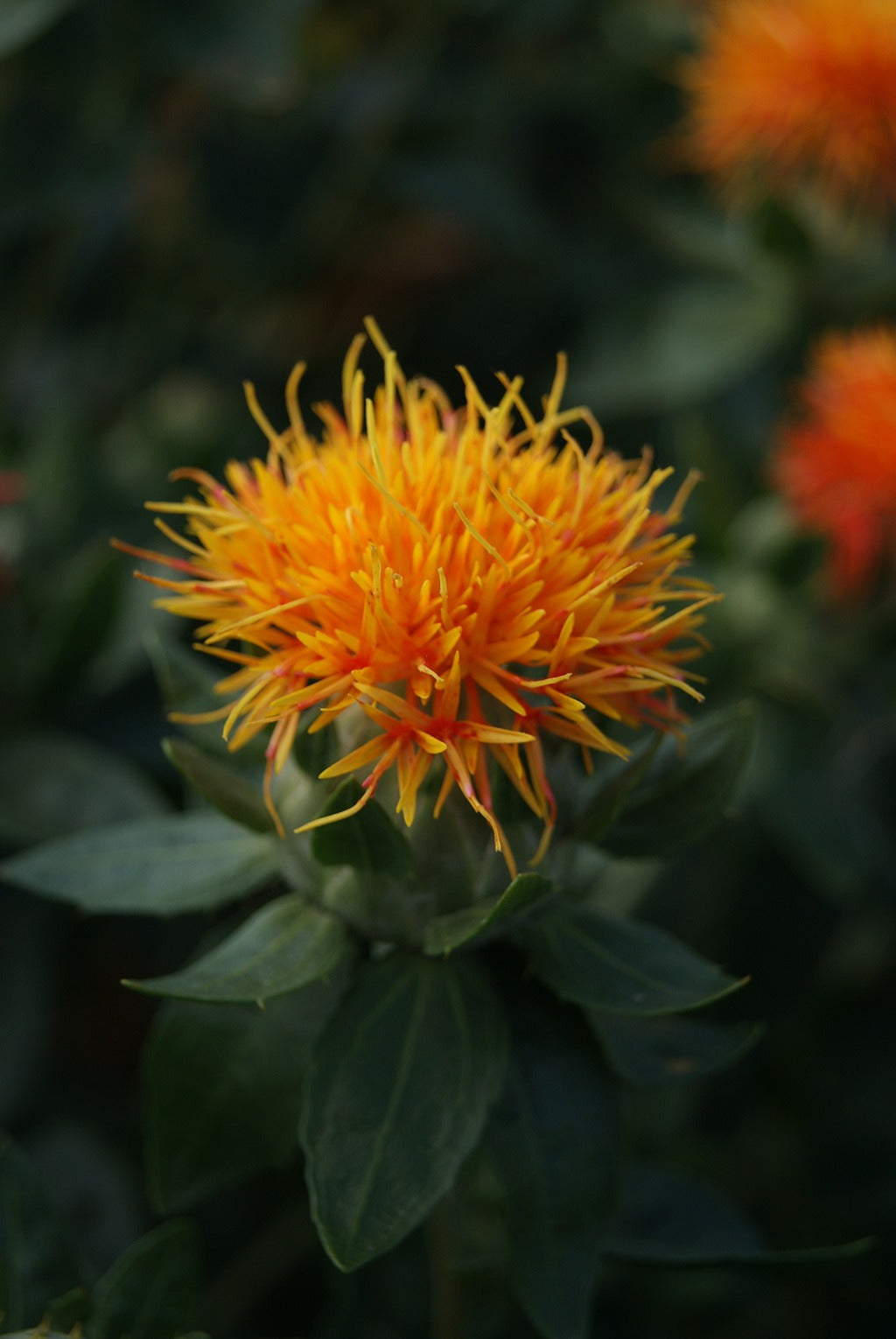
safflower
Bright yellow petals with a lightly floral taste and a sweet slightly smoky chocolate aroma.
Safflower (Carthamus tinctorius) is an annual flowering plant in the Asteraceae family. It is primarily cultivated for its seeds, rich in oil and used in various applications.
Safflower plants have tall, branching stems and bright yellow, orange, or red flowers. The flowers resemble thistle-like heads and can be used as a natural dye, yielding a yellow or red colour.
It has anti-inflammatory properties and may help heart health by improving blood circulation and reducing cholesterol levels.

Sunflower petals
Bright yellow bittersweet and nutty taste.
Sunflower petals are the vibrant, colorful petals of sunflower (Helianthus annuus) blooms. Sunflowers are tall, annual plants known for their large, round flower heads that consist of numerous yellow or orange petals surrounding a central disk of small florets.
While sunflower petals are used in certain culinary applications for their visual appeal or as an ingredient in certain dishes.
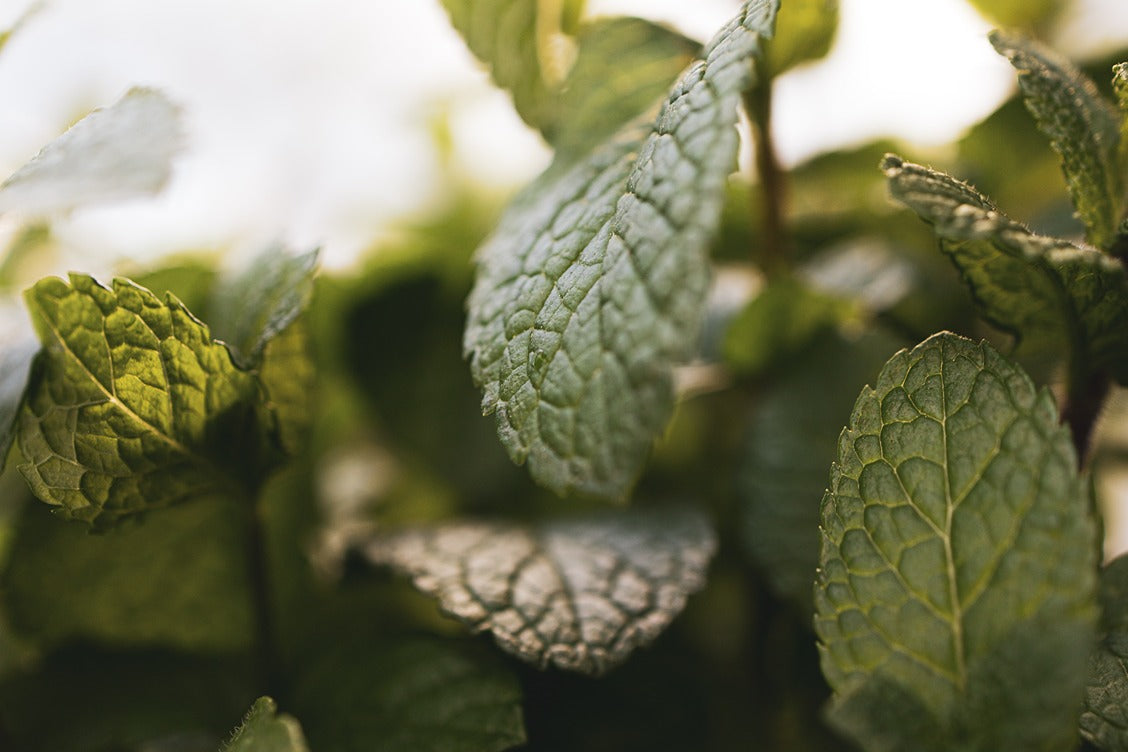
spearmint
Sweet and slightly sharp with a hint of citrus and spice.
Spearmint (Mentha spicata) is a perennial herb in the Mentha genus, belonging to the Lamiaceae (mint) family. It is native to Europe and Southwest Asia but is now widely cultivated worldwide for its culinary and medicinal uses.
Spearmint has bright green, serrated leaves and a refreshing, sweet, and slightly minty flavour. The aroma is milder than peppermint, another well-known mint variety.
Spearmint tea makes a refreshing and soothing drink known for its calming properties and can be enjoyed both hot and cold.
It contains compounds such as menthol and rosmarinic acid, which are believed to have antioxidant, anti-inflammatory, and antimicrobial properties. Spearmint tea has been used in traditional medicine to support digestion, relieve nausea, alleviate headaches, and promote relaxation.
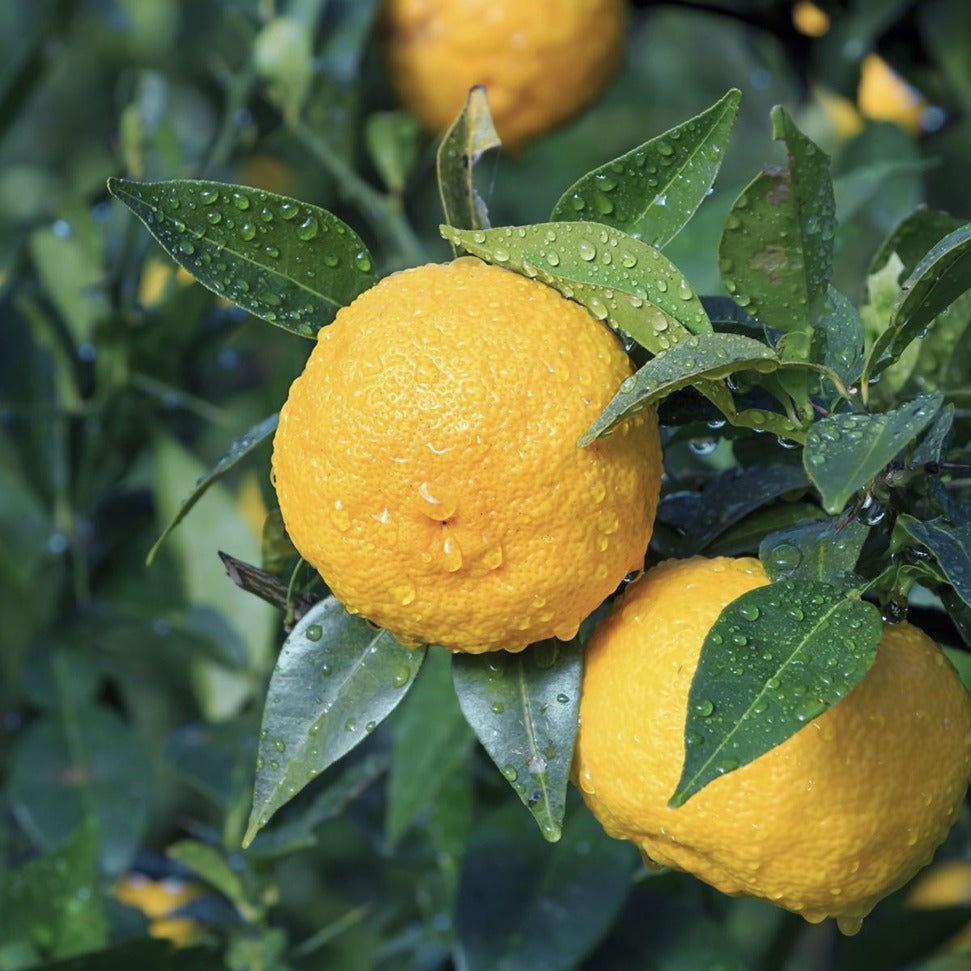
Yuzu peel
Strong citrus, zesty aroma and taste, like a lemon and mandarin orange mix.
Yuzu is a citrus fruit commonly found in Japan, Korea, and other East Asia. Its scientific name is Citrus junos. Yuzu is about the size of a tangerine and is quite fragrant. It has an outer rind or peel that is generally thick and bumpy, and it is this peel that is often used in various types of cooking.
Yuzu peel is highly aromatic and can be used fresh, dried, or pickled. The fresh peel can be grated or thinly sliced and used as a garnish or ingredient in various dishes. It is a common ingredient in ponzu sauce, a classic Japanese citrus-based sauce. The yuzu's zest (the colourful part of the peel) is also often used in recipes, while the white part (the pith) is usually avoided due to its bitterness.
Explore our range
See our range of fantastic botanical infusions and teas.

